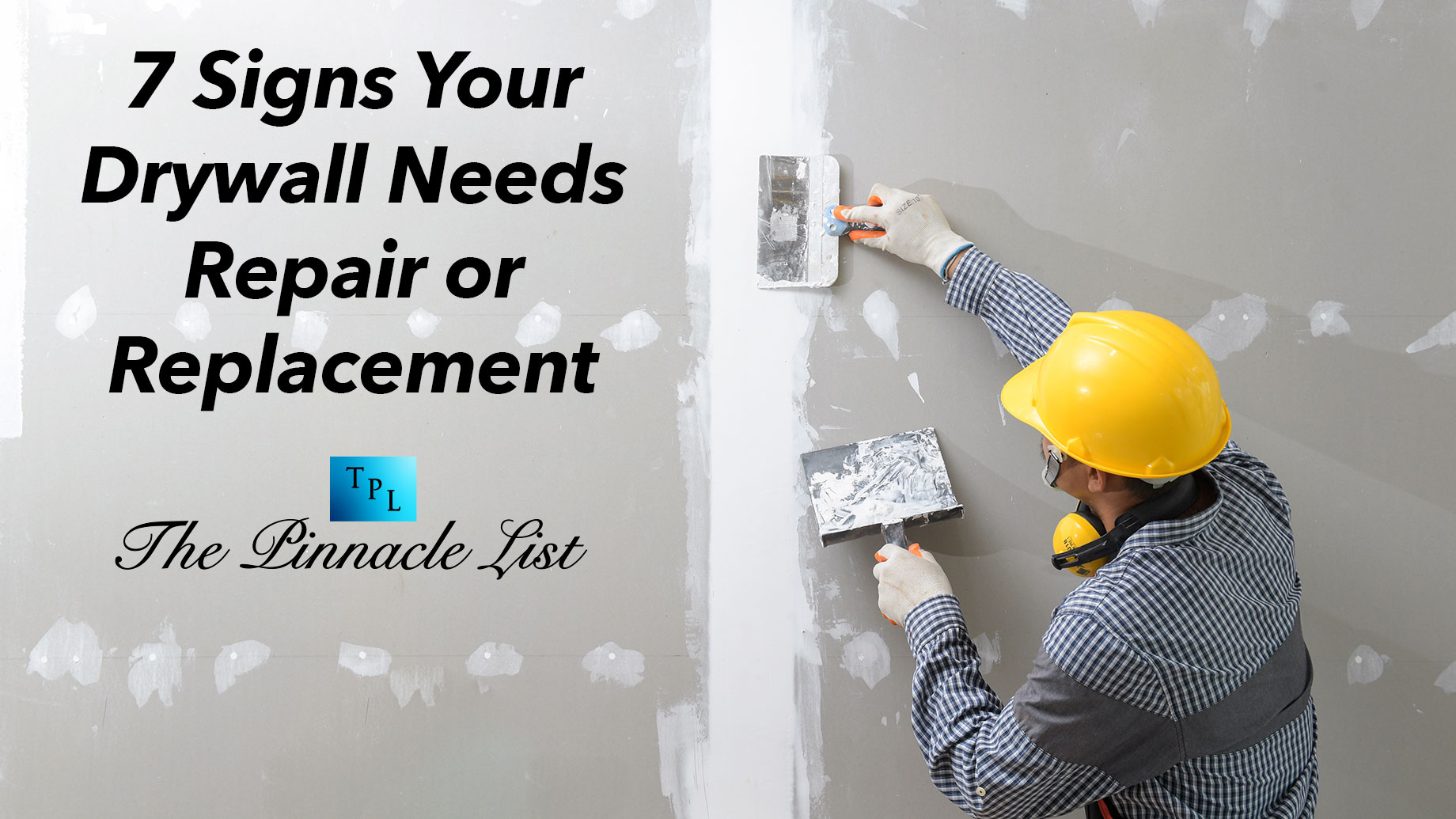
If you have a house with drywall, you might wonder, “How long does drywall last?” The actual lifespan of drywall may vary, and it may only be around for 30 years if not taken proper care. Whether you’ve lived in your home for a while or just got an older one, some parts of your drywall might not look so good anymore.
There are certain things you can fix or just ignore. But there are times when you really should replace your drywall.
Now, your question may be, when and why?
- Because damaged or discolored drywall doesn’t look nice.
- It also makes your home or office less valuable.
- It could even mean mold, mildew, allergens, and growing bacteria.
If you want to know those signs when to get your drywall replaced or repaired, you must go through our guide. Here, we have compiled seven common signs so you can call a professional drywall repair service and get your walls repaired before it’s too late.
So, let’s get started:
Sign 1: Holes In The Wall
You can fix most small holes in your drywall yourself. Don’t worry if a tiny hole from a doorknob is hitting the wall or a spot made by a mouse. You can cover them up easily.
However, bigger holes can be the real issue. They can even weaken the wall. These large holes make the wall more likely to be affected by outside forces. If you’ve got any holes over five inches wide, it’s a sign that you should consider getting new drywall.
Sign 2: Ugly Discolorations
For people who live in damp and moisture-prone areas, discoloration is a big problem for their drywall. Humidity can create ugly spots of discoloration on your walls and ceiling.
Even in a dry area, sometimes you might see discolored and drooping drywall from your bathroom ceiling. Therefore, if you don’t deal with it, moisture will keep building up and help mold and mildew grow.
If you can stop the extra moisture yourself, that’s great. But if you can’t, it’s time to get new drywall and call a professional in your area.
Sign 3: Cracks And Minor Openings
If your drywall wasn’t put in the right way with high-quality material by professionals, it could quickly develop cracks. Also, these cracks occur for different reasons, like when the temperature changes or the house settles. You can see them near doors, windows, ceilings, and corners with seams.
Therefore, don’t ignore this sign. Call a drywall repair company and get them repaired. Otherwise, these cracks will grow larger over time, weakening your home. Thus, fixing them as soon as possible is a must.
Sign 4: Popped Out Nails Or Screws
Sometimes, the nails and screws pop out of the drywall. It often happens when the pin isn’t firmly put in or if the wooden frame it’s attached to shrinks. When wood dries, it gets smaller, moves, and turns. This movement can push out nails or screws from the frame and through the drywall.
But thankfully, you can simply repair these popped nails using a particular compound, sanding, and a bit of paint. Or you can take the help of a professional and get it fixed immediately.
Sign 5: Torn Or Ripped Areas
Sometimes, when you take off things like command strips or decorations such as tiles, mirrors, and photos the wrong way, parts of your drywall might come off, too. Although this doesn’t harm your wall’s strength, these torn and ripped areas can make your walls look bad.
A drywall pro can usually fix them by using something called drywall mud.
Sing 6: Water Damage
Drywall doesn’t like water at all. When it gets wet, the paper part of the drywall sucks up water quickly. This lets mold, mildew, and fungi grow inside.
Therefore, to fix this, you usually have to replace the parts that got wet to make things normal again.
Sign 7: Changes In Foundations
Old house foundation types can significantly impact how a house settles over time. Whether your old home has a stone, brick, or concrete foundation, the choice of foundation type plays a crucial role in determining the long-term stability and potential issues your house may face.
All houses eventually sink into the ground, and that’s normal. But the problem arises when houses sink unevenly. This usually happens because the ground underneath is soft.
Uneven sinking makes the house’s structure stressed. This stress can harm many things in the house, including the drywall.
Seek Expert Help for Optimal Drywall Repair Today!
So, these are the seven most common signs we have compiled for you. You must regularly check your drywall for the signs mentioned above.